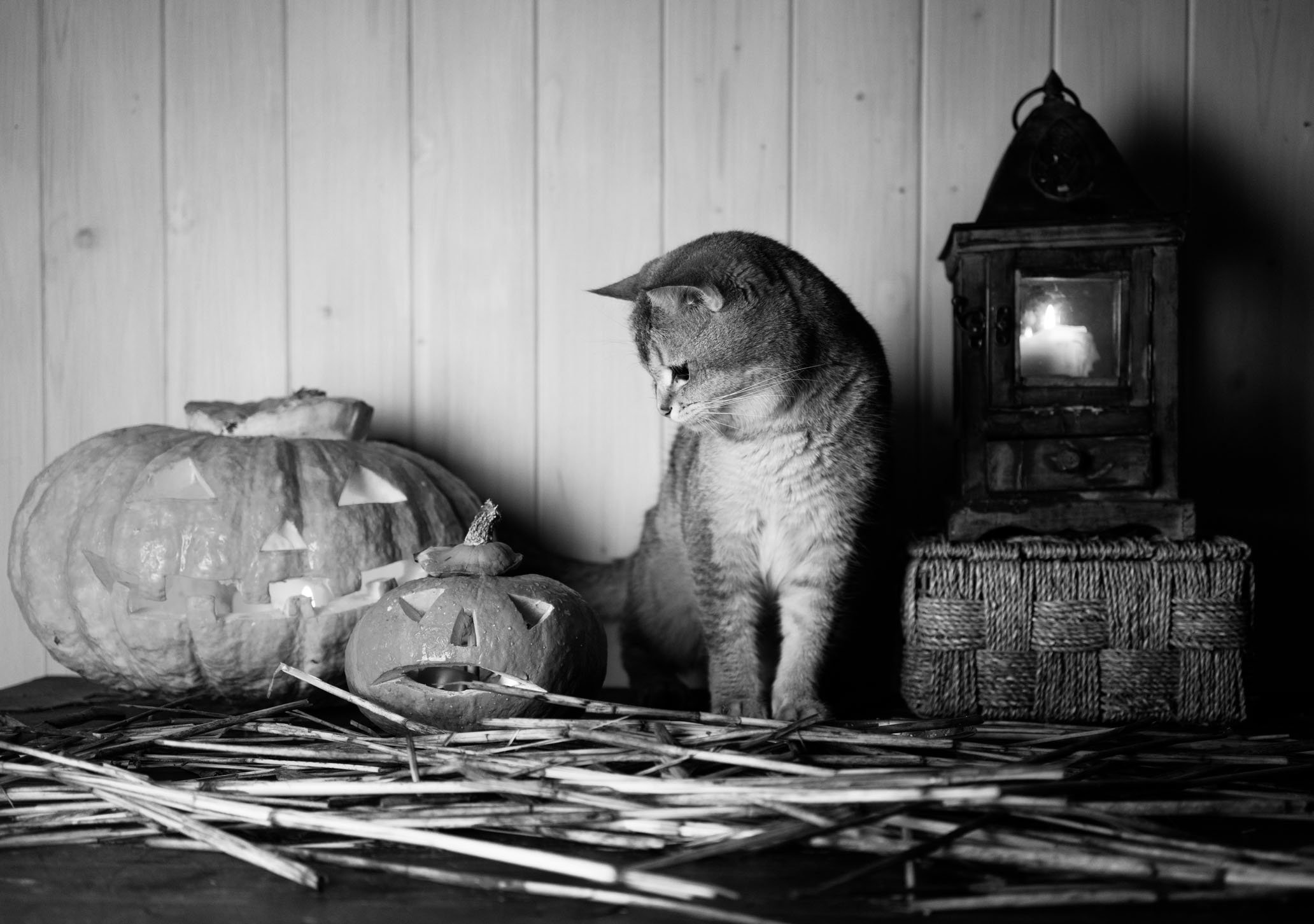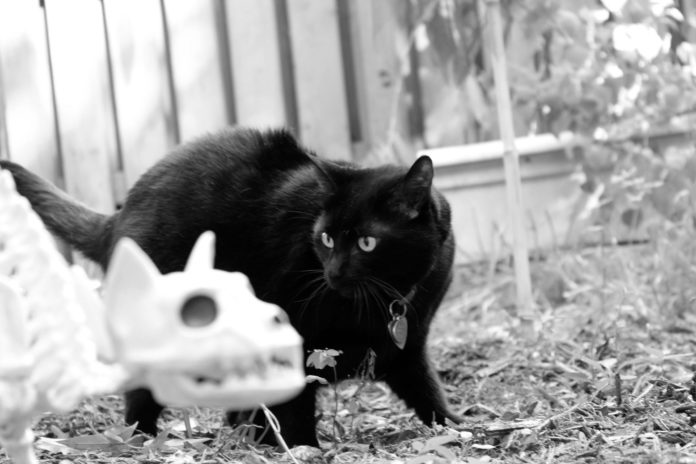If your cat got a vote, Halloween would be down as one of the least favorite holidays (right alongside the 4th of July). There really isn’t anything good about this holiday from a cat’s point of view.
Most pets are comfortable in their homes and with their own people. Every ring of the doorbell or knock at the door leads to chaos. Strangers showing up at the door, and even worse, strangers in weird costumes are not positive experiences.
Fearful pets will disappear, with cats finding impossibly small hiding places behind things and in closets. The big worry, of course, is that your cat will escape out the door during the exchange of tricks or treats.
The best way to handle this Halloween hazard is to set your cat up well before the bewitching trick-or-treat hours in a quiet room away from the entryway. This could be the basement or a back bedroom. You may want to provide a crate if your cat is comfortable in one. Spray some calming aids, like pheromones, lightly in the area. If you know your pet will truly panic, talk to your veterinarian ahead of time about some sedatives to have on hand. Play music or the television to drown out some of the outside noises. If one family member can hang out in this room with the animals, that’s even better.
Make sure your pets have on collars and ID tags in case there is an escape. Microchips are invaluable for helping pets make it back home. Be sure your contact info is up to date and correct (see our story on Lost Cats in the September issue).
Sadly, black cats are at the highest risk of injury from Halloween participants due to ignorance and superstitions about bad luck. If you have a black cat who is not just an indoor cat he should be kept totally indoors for a few days before and after this holiday.
Candles and Cats

© Georgy Borozdkin | Dreamstime
With fall weather and holidays, many people bring out the candles. Halloween decorations, Thanksgiving dinner, and Christmas or Hanukkah displays all involve candles. Candles give a warm, glowing light and often provide beautiful scents for your home. They can also be a major hazard for your pets.
Lit candles present a fire hazard without the help of an inquisitive pet. Add a curious pet and the risks go up. A cat pawing at the flame can not only get burned, or at least singed, but may also tip the candle over and cause a fire. Cats are frequently attracted to the flame and will try to “catch” it.
Tails and candles don’t mix well either. A cat walking across a table may swoosh her tail through a flame, getting singed or tipping the candle over. Plan your candle locations carefully. They need to be up high enough to avoid tail collisions and safely anchored so they can’t be easily tipped over—intentionally or accidentally by your cat. Make sure you have a catchall for the hot wax drippings, too. Keep candles on sturdy holders and ideally don’t leave the room with a lighted candle burning.
Many candles give off fumes and pollution associated with smoke hazards. The safest candles to burn are made from beeswax or soy and have natural scents, not artificial. Strongly scented candles may contain irritants or allergens that affect your cat when she breathes them in.
It may surprise you to learn that some cats will try to eat candle wax. While the wax itself is not toxic, large amounts can make your pet ill. Added oils and fragrances may also be irritants. If the candles are tea lights and have metal wick holders, the metal could cause damage to the gastrointestinal tract or an obstruction. A visit to your veterinarian and a radiograph may be in order.
You can have pets and your candles, too, but it means some extra planning and vigilance on your part.




